Hyundai Tucson vs SEAT Arona – Which model is better for everyday use?
Both models have their strengths – but which one suits you more?
Compare performance, efficiency, price and space directly: Hyundai Tucson or SEAT Arona?
Costs and Efficiency:
Price and efficiency are key factors when choosing a car – and this is often where the real differences emerge.
SEAT Arona has a decisively advantage in terms of price – it starts at 19300 £, while the Hyundai Tucson costs 30600 £. That’s a price difference of around 11332 £.
Fuel consumption also shows a difference: Hyundai Tucson manages with 1 L and is therefore significantly more efficient than the SEAT Arona with 5.40 L. The difference is about 4.40 L per 100 km.
Engine and Performance:
Power, torque and acceleration say a lot about how a car feels on the road. This is where you see which model delivers more driving dynamics.
When it comes to engine power, the Hyundai Tucson has a clearly edge – offering 252 HP compared to 150 HP. That’s roughly 102 HP more horsepower.
In acceleration from 0 to 100 km/h, the Hyundai Tucson is barely noticeable quicker – completing the sprint in 7.90 s, while the SEAT Arona takes 8.40 s. That’s about 0.50 s faster.
In terms of top speed, the SEAT Arona performs minimal better – reaching 210 km/h, while the Hyundai Tucson tops out at 194 km/h. The difference is around 16 km/h.
There’s also a difference in torque: Hyundai Tucson pulls clearly perceptible stronger with 367 Nm compared to 250 Nm. That’s about 117 Nm difference.
Space and Everyday Use:
Whether family car or daily driver – which one offers more room, flexibility and comfort?
Both vehicles offer seating for 5 people.
In curb weight, SEAT Arona is clearly perceptible lighter – 1188 kg compared to 1520 kg. The difference is around 332 kg.
In terms of boot space, the Hyundai Tucson offers distinct more room – 620 L compared to 400 L. That’s a difference of about 220 L.
In maximum load capacity, the Hyundai Tucson performs clearly perceptible better – up to 1799 L, which is about 519 L more than the SEAT Arona.
When it comes to payload, Hyundai Tucson hardly perceptible takes the win – 545 kg compared to 522 kg. That’s a difference of about 23 kg.
Who comes out on top?
Overall, the Hyundai Tucson shows itself to be leaves the rival little chance and secures the title of DriveDuel Champion.
It convinces with the more balanced overall package and proves to be the more versatile choice for everyday use.
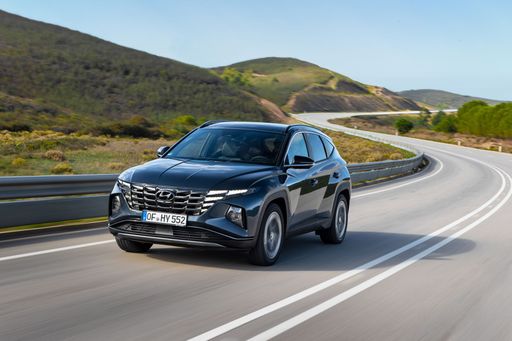
Hyundai Tucson
Hyundai Tucson
The Hyundai Tucson is a standout choice in the compact SUV segment, offering a perfect blend of style, comfort, and practicality. Its modern design is complemented by a spacious interior that provides ample room for passengers and luggage alike. With advanced technology and safety features, the Tucson ensures a smooth and enjoyable driving experience.
details @ hyundai.news
@ hyundai.news
 @ hyundai.news
@ hyundai.news
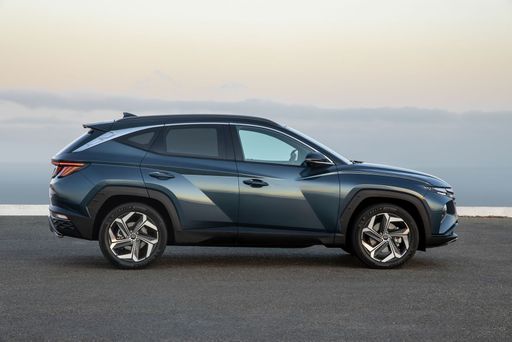 @ hyundai.news
@ hyundai.news
 @ hyundai.news
@ hyundai.news
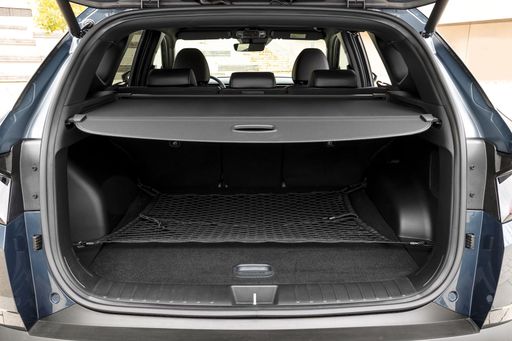 @ hyundai.news
@ hyundai.news
SEAT Arona
The SEAT Arona is a stylish compact SUV that blends urban agility with a robust design, making it an ideal choice for city dwellers and adventure seekers alike. Inside, it offers a well-crafted interior with modern technology and connectivity features that enhance the driving experience. With its efficient engine options and responsive handling, the Arona provides a dynamic ride while maintaining impressive fuel efficiency.
details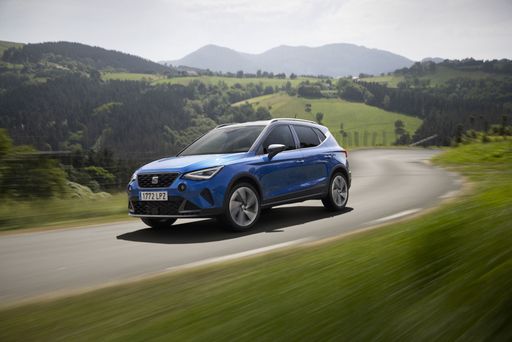 @ seat-mediacenter.de
@ seat-mediacenter.de
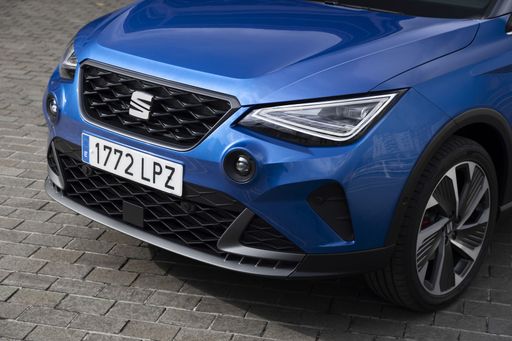 @ seat-mediacenter.de
@ seat-mediacenter.de
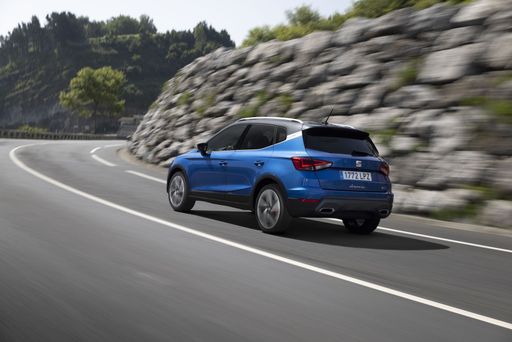 @ seat-mediacenter.de
@ seat-mediacenter.de
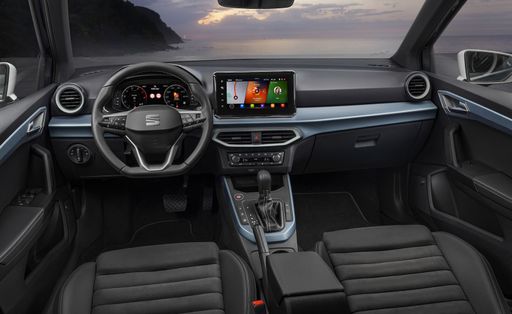 @ seat-mediacenter.de
@ seat-mediacenter.de

|

|
|
|
|
Costs and Consumption |
|
|---|---|
|
Price
30600 - 46300 £
|
Price
19300 - 29300 £
|
|
Consumption L/100km
1 - 6.9 L
|
Consumption L/100km
5.4 - 5.6 L
|
|
Consumption kWh/100km
-
|
Consumption kWh/100km
-
|
|
Electric Range
64 - 70 km
|
Electric Range
-
|
|
Battery Capacity
-
|
Battery Capacity
-
|
|
co2
22 - 156 g/km
|
co2
122 - 128 g/km
|
|
Fuel tank capacity
42 - 54 L
|
Fuel tank capacity
40 L
|
Dimensions and Body |
|
|---|---|
|
Body Type
SUV
|
Body Type
SUV
|
|
Seats
5
|
Seats
5
|
|
Doors
5
|
Doors
5
|
|
Curb weight
1520 - 1889 kg
|
Curb weight
1188 - 1268 kg
|
|
Trunk capacity
546 - 620 L
|
Trunk capacity
400 L
|
|
Length
4510 - 4520 mm
|
Length
4153 mm
|
|
Width
1865 mm
|
Width
1780 mm
|
|
Height
1650 mm
|
Height
1537 mm
|
|
Max trunk capacity
1721 - 1799 L
|
Max trunk capacity
1280 L
|
|
Payload
525 - 545 kg
|
Payload
502 - 522 kg
|
Engine and Performance |
|
|---|---|
|
Engine Type
Diesel MHEV, Petrol MHEV, Petrol, Full Hybrid, Plugin Hybrid
|
Engine Type
Petrol
|
|
Transmission
Automatic, Manuel
|
Transmission
Manuel, Automatic
|
|
Transmission Detail
Dual-Clutch Automatic, Manual Gearbox, Automatic Gearbox
|
Transmission Detail
Manual Gearbox, Dual-Clutch Automatic
|
|
Drive Type
Front-Wheel Drive, All-Wheel Drive
|
Drive Type
Front-Wheel Drive
|
|
Power HP
136 - 252 HP
|
Power HP
95 - 150 HP
|
|
Acceleration 0-100km/h
7.9 - 11.6 s
|
Acceleration 0-100km/h
8.4 - 11.3 s
|
|
Max Speed
180 - 194 km/h
|
Max Speed
182 - 210 km/h
|
|
Torque
265 - 367 Nm
|
Torque
175 - 250 Nm
|
|
Number of Cylinders
4
|
Number of Cylinders
3 - 4
|
|
Power kW
100 - 185 kW
|
Power kW
70 - 110 kW
|
|
Engine capacity
1598 cm3
|
Engine capacity
999 - 1498 cm3
|
General |
|
|---|---|
|
Model Year
2024
|
Model Year
2025
|
|
CO2 Efficiency Class
E, F, D, B
|
CO2 Efficiency Class
D
|
|
Brand
Hyundai
|
Brand
SEAT
|
What drive types are available for the Hyundai Tucson?
Available configurations include Front-Wheel Drive or All-Wheel Drive.
The prices and data displayed are estimates based on German list prices and may vary by country. This information is not legally binding.
